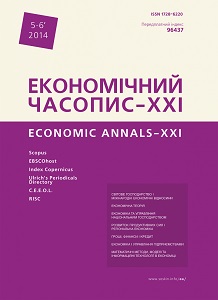THE EUROPEAN UNION TNCs’ INVESTMENT STRATEGIES OF INNOVATION DEVELOPMENT
THE EUROPEAN UNION TNCs’ INVESTMENT STRATEGIES OF INNOVATION DEVELOPMENT
Author(s): Tetyana Frolova, Volodymyr TokarSubject(s): Economy
Published by: Institute of Society Transformation
Keywords: transnational corporation (TNC); European Union; innovation development; investment strategy; economic integration
Summary/Abstract: Purpose: Integrating institutional and technological innovations into manufacturing process poses a challenge to Ukraine considering apparent flaws of its industrial enterprises’ ineffective as well as out-of-date investment strategies. The European Union TNCs’ high innovative performance as a result of their up-to-date investment strategies is a vivid instance of successful innovation and investment development management. As there is growing evidence of the European integration prospects of Ukraine, the European Union TNCs’ analysis may shine a light on the questions surrounding selection of the best suited investment strategies for Ukrainian industrial enterprises. Methods:We examine the interplay between innovation development and investment strategies of the EU TNCs, integrating methods of abstraction, deduction and induction, as well as statistical technique. Results: Taking into account the essence of investment strategies, we suggest that their basic objectives are: improvement in quality of goods; price reduction with no changes in other strategies; cost saving based on new technology, industrial engineering modes, labor and general management enhancement; capacity expansion (step-up in sales) with no changes in other strategies; market development. The aggregate R&D financing of the top 1 000 European Union TNCs has increased from 112.9 billion euros to 152.9 billion euros. So, the total growth has amounted to 40.044 billion euros, in other words, it has grown by 35.5 percent. The average annual level of aggregate R&D financing during this period accounted for 130.5 billion euros. In line with aggregate indicators, the R&D financing per TNC has shown the similar dynamics. The aggregate financing of enterprise innovation and investment activity in Ukraine in hryvnias reached the peak of 14.334 billion hryvnias (1.293 billion euros) in 2011, but this figure distorts the fact of the actual R&D decline. The highest level of the aggregate financing of enterprise innovation and investment activity in Ukraine was reached in 2007, and the record high equaled 20.739 billion hryvnias (1.870 billion euros) in 2011 hryvnias. Conclusion: A global investment strategy of a TNC is a system of long-term measures of specific and sectoral capital investment optimization, developed by management and agreed with shareholders, which involves equal distribution of investment between the North American, European and Asian segments of the world market in order to ensure the global competitiveness of a TNC. A TNC investment cycle is as a determined period from an investment idea initiation to investment product implementation resulting in an economic, social, ecological development level of a new quality or modernization of technology and management system. Relevance of the TNC’s investment strategy development is determined by such basic conditions: future shift in its life cycle stages, which have their own level of innovation and investment activity; change i
Journal: Економічний часопис - ХХІ
- Issue Year: 141/2014
- Issue No: 05+06
- Page Range: 13-16
- Page Count: 4
- Language: English

